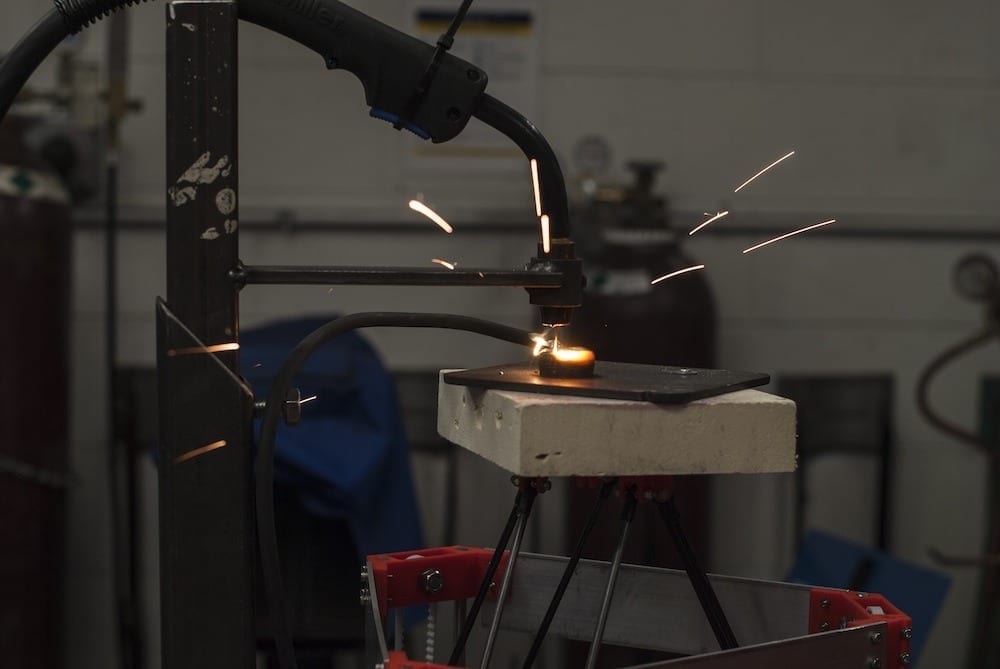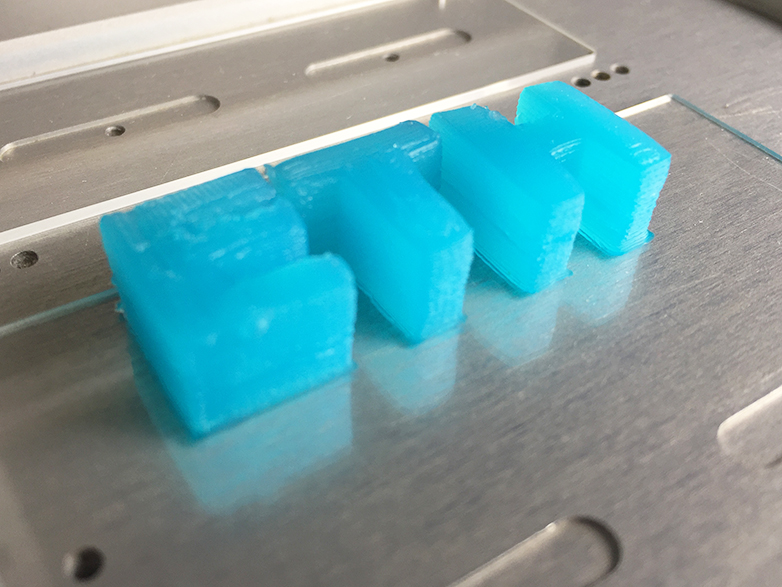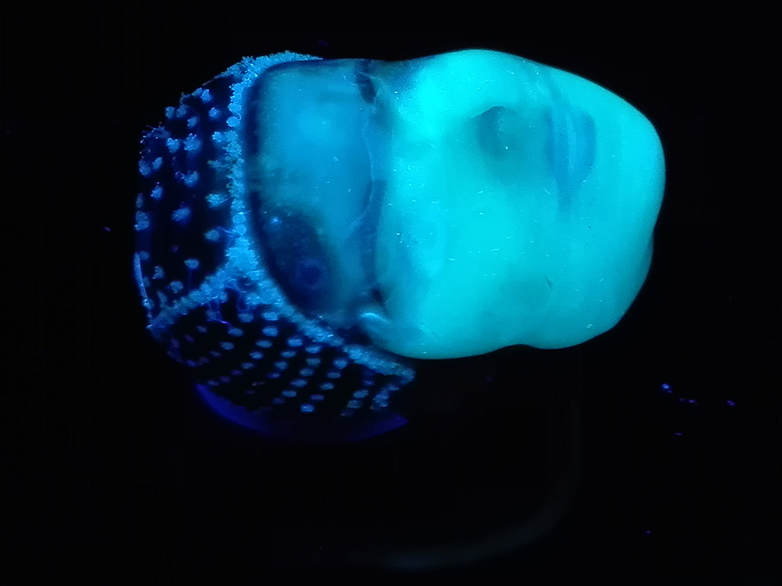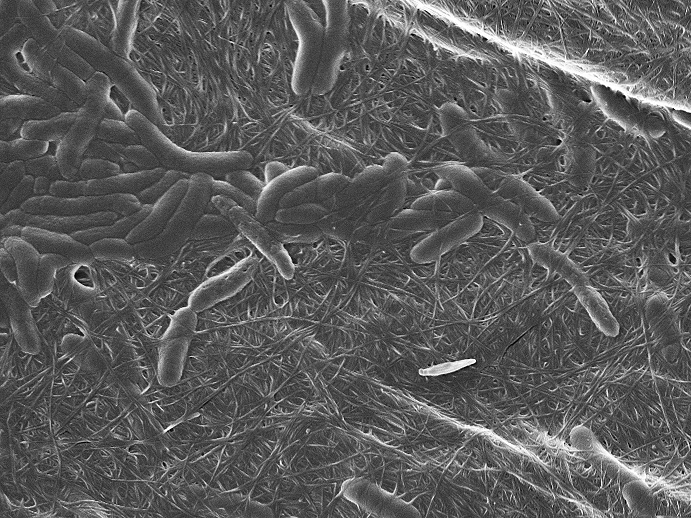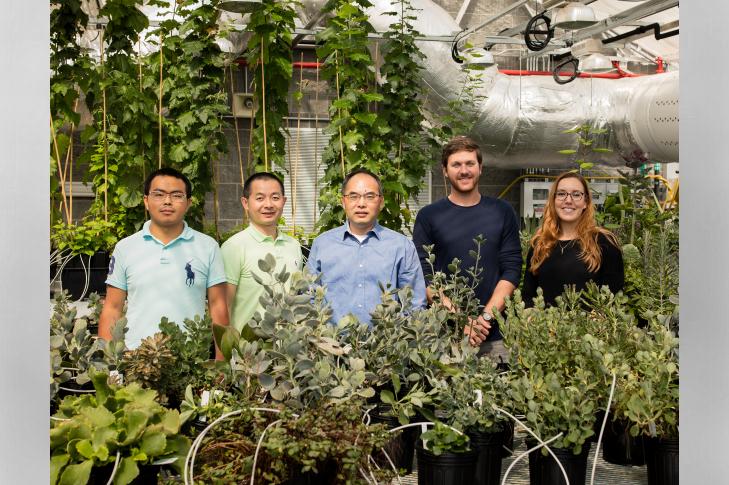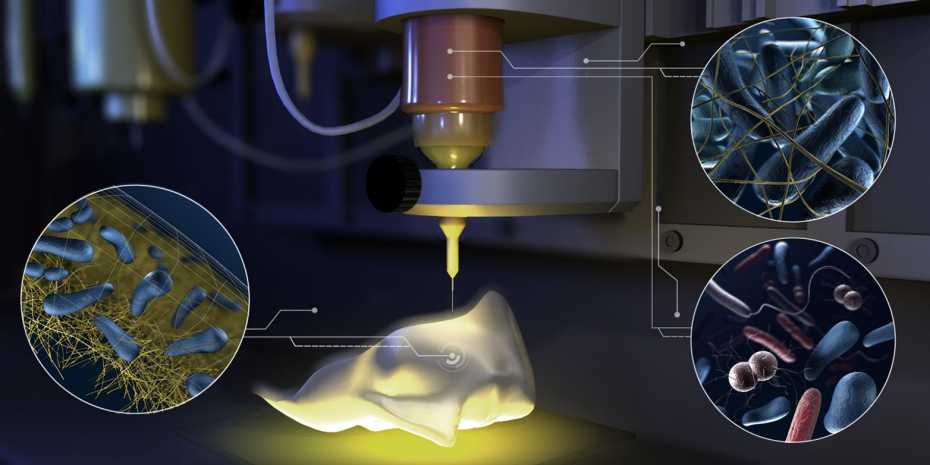
ETH researchers have developed a biocompatible ink for 3D printing using living bacteria. This makes it possible to produce biological materials capable of breaking down toxic substances or producing high-purity cellulose for biomedical applications.
There will soon be nothing that cannot be produced with 3D printing. However, the materials used for this process are still “dead matter” such as plastics or metals.
A group of ETH researchers led by Professor André Studart, Head of the Laboratory for Complex Materials, has now introduced a new 3D printing platform that works using living matter. The researchers developed a bacteria-containing ink that makes it possible to print mini biochemical factories with certain properties, depending on which species of bacteria the scientists put in the ink.
Adding bacteria with desired properties
Studart’s group members and first authors Patrick Rühs and Manuel Schaffner used the bacteria Pseudomonas putida and Acetobacter xylinumin their work. The former can break down the toxic chemical phenol, which is produced on a grand scale in the chemical industry, while the latter secretes high-purity nanocellulose. This bacterial cellulose relieves pain, retains moisture and is stable, opening up potential applications in the treatment of burns.
The ETH researchers’ new printing platform offers numerous potential combinations. In a single pass, the scientists can use up to four different inks containing different species of bacteria at different concentrations in order to produce objects exhibiting several properties.
The ink is composed of a biocompatible hydrogel that provides structure. The hydrogel itself is composed of hyaluronic acid, long-chain sugar molecules, and pyrogenic silica. The culture medium for the bacteria is mixed into the ink so that the bacteria have all the prerequisites for life. Using this hydrogel as a basis, the researchers can add bacteria with the desired “range of properties” and then print any three-dimensional structure they like.
As viscous as toothpaste
During the development of the bacteria-containing hydrogel, the gel’s flow properties posed a particular challenge: the ink must be fluid enough to be forced through the pressure nozzle. The consistency of the ink also affects the bacteria’s mobility. The stiffer the ink, the harder it is for them to move. If the hydrogel is too stiff, however, Acetobacter secretes less cellulose. At the same time, the printed objects must be sturdy enough to support the weight of subsequent layers. If they are too fluid, it is not possible to print stable structures, as these collapse under the weight exerted on them. “The ink must be as viscous as toothpaste and have the consistency of Nivea hand cream,” is how Schaffner describes the successful formula.
The scientists have named their new printing material “Flink”, which stands for “functional living ink”, and recently presented the technique in the journal Science Advances.
Enormous potential
As yet, the material scientists have not studied the lifespan of the printed minifactories. “As bacteria require very little in the way of resources, we assume they can survive in printed structures for a very long time,” says Rühs.
However, the research is still in its initial stages. “Printing using bacteria-containing hydrogels has enormous potential, as there is such a wide range of useful bacteria out there,” says Rühs. He blames the bad reputation attached to microorganisms for the almost total lack of existing research into additive methods using bacteria. “Most people only associate bacteria with diseases, but we actually couldn’t survive without bacteria,” he says. However, the researchers believe their new ink is completely safe. The bacteria they use are all harmless and beneficial.
Sensors for toxic substances and filters for oil spills
In addition to medical and biotechnology applications, the researchers envisage many other potential uses. For example, objects of this kind can be used to study degradation processes or biofilm formation. One practical application might be a bacteria-containing 3D-printed sensor that could detect toxins in drinking water. Another idea would be to create bacteria-containing filters for use in disastrous oil spills. First, it will be necessary to overcome the challenges of the slow printing time and difficult scalability. Acetobacter currently takes several days to produce cellulose for biomedical applications. However, the scientists are convinced that they can further optimise and accelerate the processes.
The development of special materials for 3D printing is a speciality of ETH professor André Studart’s research group. For example, he and his interdisciplinary team have also developed a printable high-porosity ink made of ceramic, which allows the printing of very lightweight bone-like structures used for energy production.
The Latest on: Mini biochemical factories
[google_news title=”” keyword=”mini biochemical factories” num_posts=”10″ blurb_length=”0″ show_thumb=”left”]- Mini Cooper Electric reviewon May 6, 2024 at 4:59 pm
The BMW Group is committed to the circular economy, but the new Cooper Electric is made in a factory in Zhangjiagang in China. For now, Mini’s Oxford plant is due to start production in 2026.
- The best mini PCs in 2024on April 30, 2024 at 10:27 am
The best mini PCs might be tiny compared to standard-sized rigs but they pack enough power to perform a wide range of tasks — including web browsing, content creation and gaming. These minuscule ...
- MINI Unveils the Aceman: It’s First All-Electric Crossoveron April 28, 2024 at 5:00 pm
MINI has officially introduced the Aceman, marking its entry into the crossover segment within the premium small car market. The Aceman, combining compact dimensions with spacious interiors ...
- Crumbl Cookies is making Mondays a little sweeter, selling mini cookieson April 26, 2024 at 3:02 pm
The cookie company is trying to provide a sweet anecdote to the persistent feeling of crankiness that only the start of the week can bring, selling large and now mini cookies every Monday.
- Mini Countrymanon April 25, 2024 at 11:01 pm
This is the BMW Group’s third swing at the idea of a family-sized modern Mini. The Mini Countryman SUV has been around as a model since 2010 but until now it has had the aura of a water-tester ...
- Mini Countryman reviewon April 25, 2024 at 5:00 pm
factory navigation and various ADAS systems. Level 3 (£7500) brings a larger fuel tank, heated electric seats, augmented-reality navigation and Mini’s Driving Assistant Professional.
- Best Mini PCs to Maximize Desk Spaceon April 22, 2024 at 4:59 pm
The best mini PC can help you maximize your desk space without compromising on performance. These compact computing powerhouses offer a space-saving alternative to traditional desktop towers ...
- NYT's The Mini crossword answers for April 21on April 20, 2024 at 5:00 pm
The Mini is a bite-sized version of The New York Times' revered daily crossword. While the crossword is a lengthier experience that requires both knowledge and patience to complete, The Mini is an ...
- $300,000 robotic micro-factories pump out custom-designed homeson April 20, 2024 at 12:19 am
AUAR partners with home builders and contractors in Europe and North America, licensing its micro-factory and all the digital technology to build low-energy homes at the price of normal homes ...
- Mac minion April 17, 2024 at 2:04 am
The Mac mini was updated in January 2023 with Apple's M2 and M2 Pro chips, replacing the prior M1 and Intel-based models. It now starts at a lower $599 price point. Introduced in January 2023 ...
via Google News and Bing News







